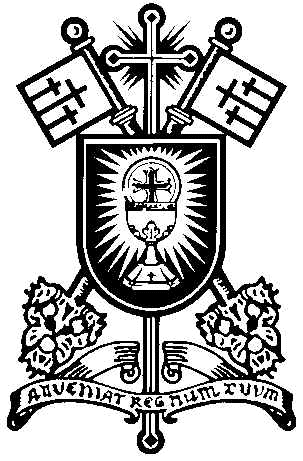 The Liberal Catholic Church
The Liberal Catholic Church

A tri-annual magazine exploring the deeper aspects of religious thought,
experience and practice in the world today
![]()
|
|
|
World News September 1998 X Johannes van Alphen South America Theosophical principles, which are at the basis of Liberal Catholic beliefs, are held highly, with great enthusiasm, in all centres where the Church is present. This interest is also shared in other Latin American countries. Bishop Batet, Regionary Bishop of the Province of Argentina, and Lilian Batet have been instrumental in running courses of the Spanish Liberal Catholic Institute of Studies, either by lectures or by correspondence. Through this, there are students in various countries, such as in Lima in Peru, and in Santiago, a city in Chili across the border from Mendoza in Argentina. In Mendoza the newly consecrated Bishop Arnoldo Salzmann has a thriving church and from here he visits Santiago from time to time to conduct services. Due to the vast distances between Liberal Catholic centres in South, Central and North America and the restricted economies prevalent in most Latin American countries, there is little cohesion between these centres. During the visit this became all too clear. A welcome initiative has been set in motion to organise an All-Spanish Congress, tentatively to be held in Bogotá from July 2-11, 1999. The Secretary of the Organising Committee is the Rev Mario M. Herrera, a Cuban Priest at present living in the USA. His address is P O Box 351082, Miami, FL 33125-1032, U.S.A. The U.S.A. This type of life style is typical of the New Age and is in line with the original Liberal Catholic way of thinking: Spiritual health and physical health should go hand in hand. In many homes one would find neither radio nor television, or the use thereof is carefully controlled to exclude the disturbing and violent scenes so often broadcast by these media. In this way the homely atmosphere is one of stimulating positive thinking conducive to developing a receptive attitude towards a spiritual life. The enthusiasm of the children who crowded the Sunday school was indicative of the success of this particular community. Europe In Denmark, the debates were centred on the true principles of The Liberal Catholic Church, which are based on the Ancient Wisdom as was expressed by the Lord Christ and as is found in gnostic and Neo-Platonic writings. Much attention was placed on the results of clairvoyant and occult investigations of our early Founding Bishops and other eminent researchers, notably Professor van der Stok. A Peep into the Future One of the visions is that in the East an altar will be standing, as it is in our churches today. The Priest will celebrate part of the service at that altar, facing East, i.e. not contra-populum, but symbolising that he leads the congregation in worship. In the West there will be an altar where a Priestess celebrates her part of the Eucharist, possibly alter-nating with the Priest in the East. She will also be facing East, i.e. facing the con-gregation. This is a beautiful feminine symbol of inclusivity, expressing caring and being all-embracing. The climax will be when the Priest and Priestess come together at the third altar, placed in the centre, from where the service is taken to its completion. That today there is a hankering for a new form of worship is true indeed. Many have an innate desire to experiment with new types of Eucharistic service, feeling that the old form has had its time. At one of the congresses one such form was used. To the author it left behind a feeling of play-acting. There is a great danger of mankind wanting to play God and even command God, as is evident in some of the more charismatic types of church worship. It is not realised that within ourselves we have the divine spark, in Christianity known as the Christ-consciousness, which eventually will lead us to become spiritual people, being able to rise above all the propensities of life. We will then be gods, as was prophesied by the serpent to Eve in the Garden of Eden. At the present stage of evolution we are assuming to be gods, the all-commanding and all-powerful species which does with this globe as it wills. It is typical of the youthfulness of the Aquarian, where discernment as to what is right and wrong needs still to grow. In the following decennia we shall have to go through troublesome times, necessary to make mankind realise that as gods we have a grave responsibility. Only when this responsibility is shouldered in earnest will the time be ripe for mankind to be given a beautiful new form of spiritual self-expression. For is this not what church worship is about? Seeking salvation is Piscean, seeking self-expression and offering oneself as a useful tool in God's hand is Aquarian. Then one will realise the spiritual power within oneself. It has already been said that the beauty and glory of the new type of worship will exceed the most imposing of what we could envisage today. We should continue to seek this self-expression in the magnificent catholic service as was given to us by the Lord Christ 2000 years ago. In doing so, the more ready we will be to recognise the Lord Christ when he comes to bring mankind a new dispensation. Not a new form of play-acting by some who deem themselves as inspired to bring the new, but a dispensation which will last, at least another 2000 years. |
|
email The Liberal Catholic
email The Presiding Bishop |